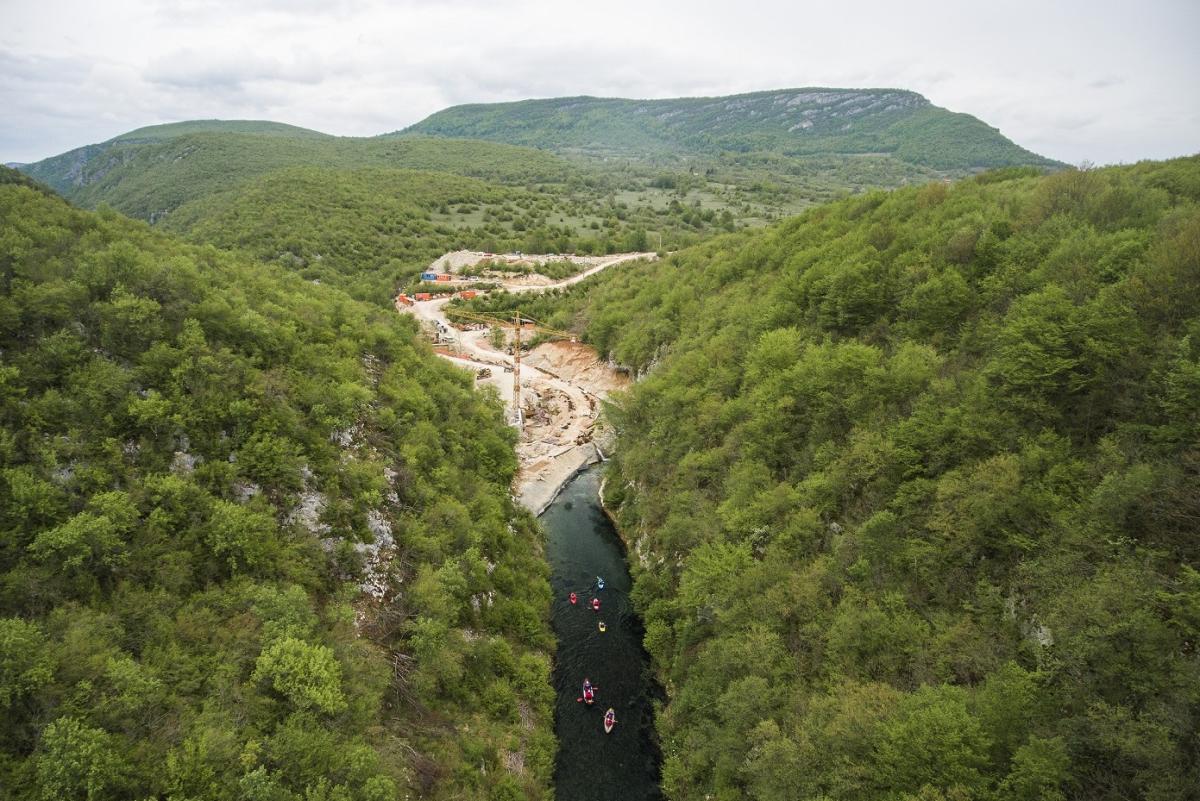The Balkan Rivers: Save the Blue Heart of Europe
 If you think about the Balkans, you think of many things: of vacation at the Mediterranean Sea, of past wars – but certainly not of stunning rivers. Indeed, Europe’s best rivers are located between Slovenia and Greece – the Blue Heart of Europe beats on the Balkans. This is where truly wild, living rivers can still be found: crystal clear creeks, spectacular waterfalls, deep river canyons, alluvial forest, and huge wild rivers with vast gravel banks. What’s more, these rivers are one of the most important hotspots for European freshwater biodiversity. Did you know that the Balkan rivers host 69 fish species that live only here and nowhere else in the world? Or did you know that over 40% of all endangered freshwater mussels and snails of Europe can be found in these freshwater systems?
If you think about the Balkans, you think of many things: of vacation at the Mediterranean Sea, of past wars – but certainly not of stunning rivers. Indeed, Europe’s best rivers are located between Slovenia and Greece – the Blue Heart of Europe beats on the Balkans. This is where truly wild, living rivers can still be found: crystal clear creeks, spectacular waterfalls, deep river canyons, alluvial forest, and huge wild rivers with vast gravel banks. What’s more, these rivers are one of the most important hotspots for European freshwater biodiversity. Did you know that the Balkan rivers host 69 fish species that live only here and nowhere else in the world? Or did you know that over 40% of all endangered freshwater mussels and snails of Europe can be found in these freshwater systems?
Hardly anyone knows about it. However, this unknown treasure is threatened. The rivers of the Balkans are to be dammed. 2,796 hydropower plants are projected to be built in the next few years – commonly with the help of Western businesses and loans. Not even the most striking and valuable river stretches and national parks are to be spared.
We – the environmental NGOs RiverWatch and EuroNatur – want to prevent this horror scenario from becoming reality. In preparation for the campaign, we assessed the Balkan river web and arrived at an impressive result: 80% of the 35,000 river kilometers that we examined is still in very good or good condition, 30% is almost unspoiled. In the rest of Europe the picture is reversed: 80% is in bad condition.
The Blue Heart of Europe
On a river map, the result looks like this:
Near-natural stretches are marked in blue, slightly to moderately modified stretches are green, yellow represents extensively modified stretches, and red means severely modified. While the hydromorphological map of the Balkan river web shows mainly blue and green colours, a comparable map of the rest of Europe would light up in yellow and red.
European Biodiversity Hotspot
Balkan rivers stand out for providing habitat to an enormous number of species, many of whom are endemites (species that live only here and nowhere else in the world). According to current scientific knowledge 69 fish species are endemic to the Balkans. In addition, 40% of all endangered freshwater mollusk species (mussels and snails) of Europe live in the rivers and lakes of the Balkans.
 |
This data may not exhaustive, and is likely that even more species – undiscovered species even – live in the Balkan rivers. Another characteristic of the Balkan rivers is that they are in large parts unexplored.
What’s more, the region is believed to provides habitat to an exceptional species: the Danube Salmon (Hucho hucho). Once wide-spread across the Danube basin, the center of the remaining population of this species is concentrated in only a few rivers of the Danube river basin which are now threatened by dam construction. But scientific knowledge was limited. Within the context of the campaign we increased research about the Danube Salmon’s distribution in order to make sound assumptions about the impact of planned dams on its remaining population. The study conducted by 18 scientists from 7 countries clearly showed, that the Balkan rivers constitute the last big hot spot for this species. Self-sustaining populations of Huchen were found in 43 rivers with a total length of 1,842 kilometres. Find the study and related downloads here.

However, this enormous biodiversity is threatened. About 75% of all the threatened fish species and 70% of the threatened molluscs in Europe are highly vulnerable to dam construction.
The Threat
The Blue Heart is at risk of a heart attack. According to our research, 2,796 hydropower plants are projected to be built in the region in the next years. This is how it would look like on a map:
Many countries plan excessive damming of all their rivers. After already having completed many new dams, Macedonia intends to construct another 153 dams (with another 22 currently under construction) while Albania plans to build another 305 hydropower plants (with an additional 81 already under construction). Serbia even has 826 projects in the pipeline. The gold rush atmosphere that has emerged in the hydropower sector in recent years needs to be significantly revised if we want to preserve our European riverine heritage in the future.
|
|
The campaign
In cooperation with the German environmental organisation ‘EuroNatur’ and as well as local partners in the respective Balkan countries, Riverwatch has launched the “Save the Blue Heart of Europe” campaign aiming to save this natural European heritage from destruction.
In our campaign, we concentrate on four key areas that are particularly valuable: the Vjosa River in Albania, the Mavrovo National Park in Macedonia, the Sava River in Slovenia, Croatia, Bosnia and Herzegovina, and Serbia, as well as the rivers of Bosnia & Herzegovina. Needless to say, all of them are threatened by large dam projects.
Read more about the campaign at www.balkanrivers.net
|
|
For more in-depth information about the Blue Heart of Europe and our key areas, please visit our campaign website: www.balkanrivers.net















